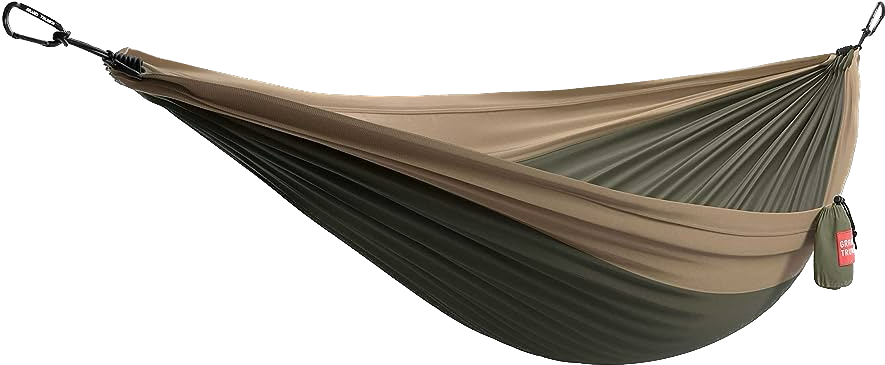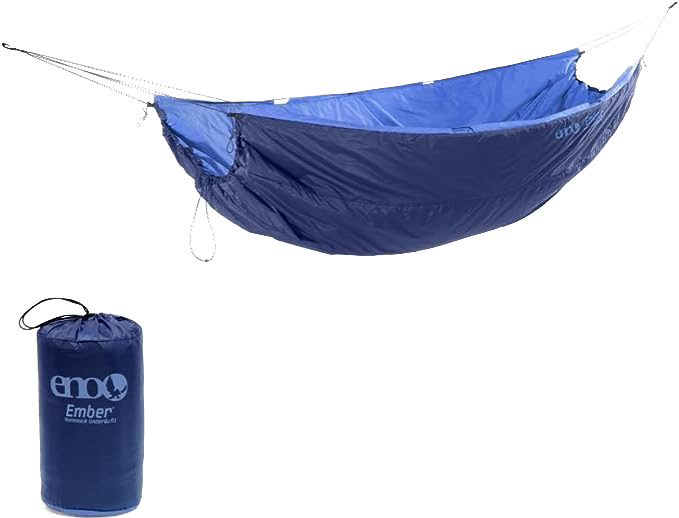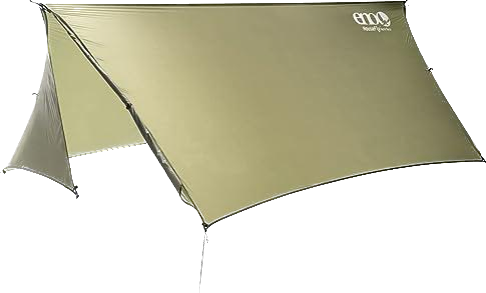Hammocks are a popular choice for outdoor relaxation, and for many people, they are an essential part of a backyard or camping setup. But as with any product, there is always a question of durability and lifespan. So, how long should a hammock last?
In general, a good-quality hammock should last for 200 – 400 nights or several years with proper care. However, cheaper models may have a shorter lifespan. The lifespan of a hammock will depend on a few factors, including the materials used, the level of care and maintenance, and the frequency of use.
Polyester vs rope vs synthetic
One of the most important factors in determining the lifespan of a hammock is the materials used. Hammocks are typically made from either natural or synthetic fibers, and each type has its own benefits and drawbacks.
Natural fiber hammocks, such as cotton or rope, are often more comfortable and breathable than synthetic options. They also have a more traditional and rustic appearance, which can be appealing to some users. However, natural fibers are prone to fading and rot when exposed to the elements, which can shorten the lifespan of the hammock.
Synthetic fiber hammocks, such as nylon or polyester, are more durable and resistant to fading and rot. They are also typically easier to clean and maintain. However, synthetic fibers may not be as comfortable as natural options and may not have the same level of breathability.
| Natural Fiber Hammocks | Synthetic Fiber Hammocks | |
| Materials Used | Cotton, rope, etc. | Nylon, polyester, etc. |
| Pros | Comfortable, breathable | Durable, easy to clean |
| Cons | Prone to fading and rot | May not be as comfortable |
| Recommended Use | Occasional use in protected areas | Frequent use or in harsher environments |
| Lifespan (with proper care) | 150-300 Nights | 200-400 Nights |
As you can see, natural fiber hammocks are generally more comfortable and breathable, but they are prone to fading and rot when exposed to the elements. Synthetic fiber hammocks are more durable and resistant to fading and rot, but they may not be as comfortable as natural options.
When deciding on a hammock, it is important to consider the materials used and how you will be using the hammock. If you plan to use your hammock frequently or in harsher environments, a synthetic fiber hammock may be a better choice for durability. If you only plan to use your hammock occasionally in a protected area, a natural fiber hammock may be more comfortable and suitable for your needs. Regardless of the type of hammock you choose, proper care and maintenance will help to extend its lifespan.
Additionally, hammocks tend to stretch and sag over time. If your hammock is starting to sag, check out our article 6 Tips for Fixing a Sagging Hammock to extend your hammock’s life and be more comfortable.
Leaving hammocks outside (outdoor hammocks)
Leaving a hammock outside can affect its lifespan in a number of ways, depending on the materials used and the weather conditions it is exposed to.
In general, natural fiber hammocks such as cotton or rope are more prone to fading and rot when left outside, as they are not as resistant to the elements as synthetic fibers. Leaving a natural fiber hammock outside for extended periods of time, especially in direct sunlight or in wet or humid conditions, can significantly shorten its lifespan.
Synthetic fiber hammocks, such as nylon or polyester, are generally more resistant to fading and rot and can withstand being left outside for longer periods of time. However, they can still be affected by extreme weather conditions, such as prolonged exposure to direct sunlight or extreme cold. Over time, this can weaken the fibers and reduce the lifespan of the hammock.
For more information about leaving hammocks outdoors check out our article Can Hammocks be Left Outside?
Outdoor Hammocks
Many hammocks on the market are specifically designed for outdoor use. These hammocks are typically made from more durable materials and are built to withstand the elements better than indoor hammocks.
Outdoor hammocks are often made from synthetic fibers such as nylon or polyester, which are more resistant to fading and rot than natural fibers like cotton or rope. They may also have additional features such as water-resistant or UV-resistant coatings to help protect them from the elements.
Despite their durability, outdoor hammocks are still subject to wear and tear and can be affected by extreme weather conditions. To extend their lifespan, it is important to follow the manufacturer’s instructions for care and maintenance and to store them in a dry, protected area when not in use. Still, a good-quality outdoor hammock should last for several years.
Note: Many hammocks can be fire resistant but not fireproof. Be sure to maintain at least 4 feet away from any open flame to avoid any fire damage or melting. We dive more in-depth into this in our article Are Hammocks Fireproof?
Leaving hammocks out in the rain.
As much as we all love spending time in our hammocks, it’s important to remember that they’re not indestructible. Leaving your hammock out in the rain for extended periods can cause some serious damage and shorten its lifespan.
Both natural and synthetic fiber hammocks can be affected by prolonged exposure to rain. Natural fiber hammocks, made from materials like cotton or rope, are especially prone to rot and mold in wet conditions. Synthetic fiber hammocks, made from materials like nylon or polyester, are more resistant to those issues, but they can still be damaged by constant exposure to water.
In addition to potentially damaging the fibers of your hammock, leaving it in the rain can also cause the metal or wooden components, like the stand or hanging hardware, to rust or become weakened. This can affect the overall stability and safety of your hammock, which is not something you want to risk when you’re relaxing in the great outdoors.
To keep your hammock in top condition, it’s best to store it in a dry, protected area when not in use. If you do need to leave it outside in the rain, make sure to follow the manufacturer’s care instructions to ensure the best possible protection. Usually, this will mean washing your hammock and letting it properly dry.
How to Properly Store a Hammock
The best way to store your hammock will depend on its size and type, as well as the space and storage options available to you. That’s why we’ve created a Hammock Storage Guide to help you out. But in the meantime, here are a few general tips for storing hammocks to help keep them in top condition:
Here are some key tips for storing your hammock to help keep it in top condition:
- Choose a dry, protected area: To extend the lifespan of your hammock, it’s best to store it in a dry, protected area when not in use. This could be a garage, shed, or other covered space. Avoid storing your hammock in damp or humid areas, as this can lead to fading, rot, and other types of damage.
- Fold or roll the hammock: To prevent creasing and wear, it’s a good idea to fold or roll your hammock rather than leave it hanging or crumpled up. Just make sure to follow the manufacturer’s instructions for folding or rolling your specific type of hammock, as different hammocks may require different techniques.
- Use a storage bag: If you have a portable hammock, consider using a storage bag to keep it clean and protected when not in use. A storage bag can also help keep your hammock organized and prevent it from becoming tangled or disorganized.
- Store the hammock properly: If you have a hammock with a stand, it’s important to store the stand and hammock properly to prevent damage. This may include disassembling the stand and storing it in a dry, protected area, or covering the stand with a protective cover.
By following these simple tips, you can keep your hammock in great shape for all your outdoor adventures.
To summarize, the lifespan of a hammock depends on a variety of factors, including the materials used, the level of care and maintenance, and the frequency of use. With proper care, a good-quality hammock should last for several years, while cheaper models or those made from natural fibers may have a shorter lifespan. To get the most out of your hammock, it is important to follow the manufacturer’s instructions for use and care and to store it in a dry, protected area when not in use.



 Hello there, we're Vira Outdoors!
Hello there, we're Vira Outdoors!

